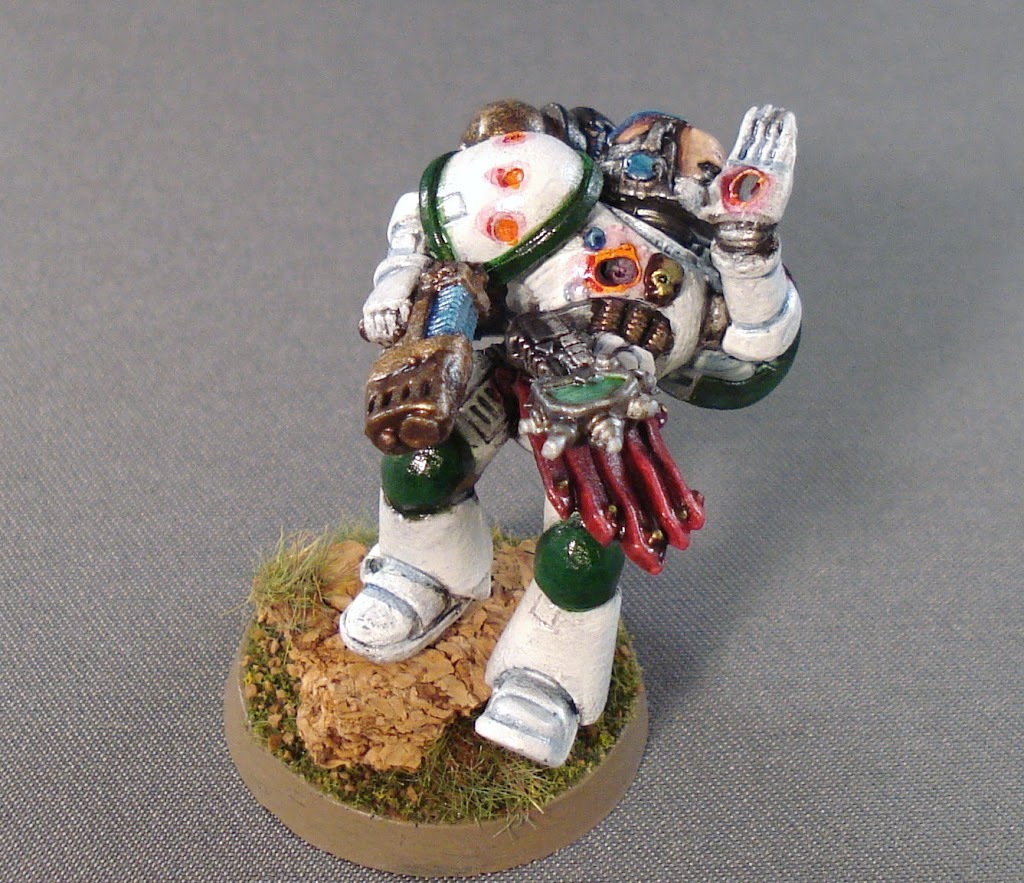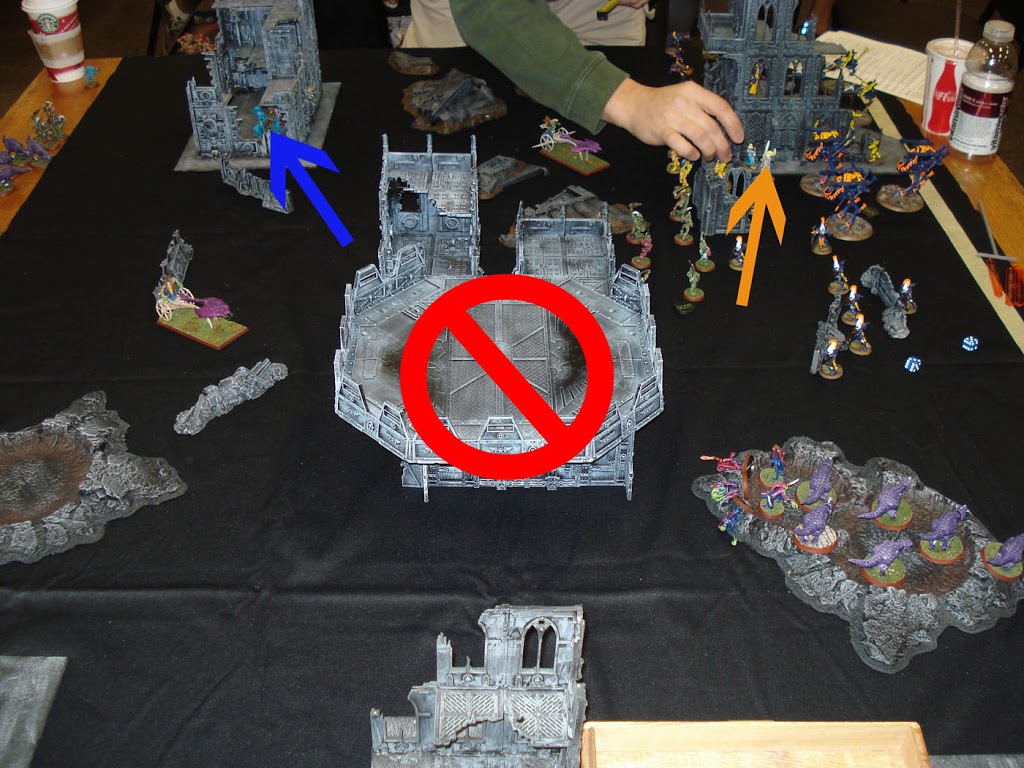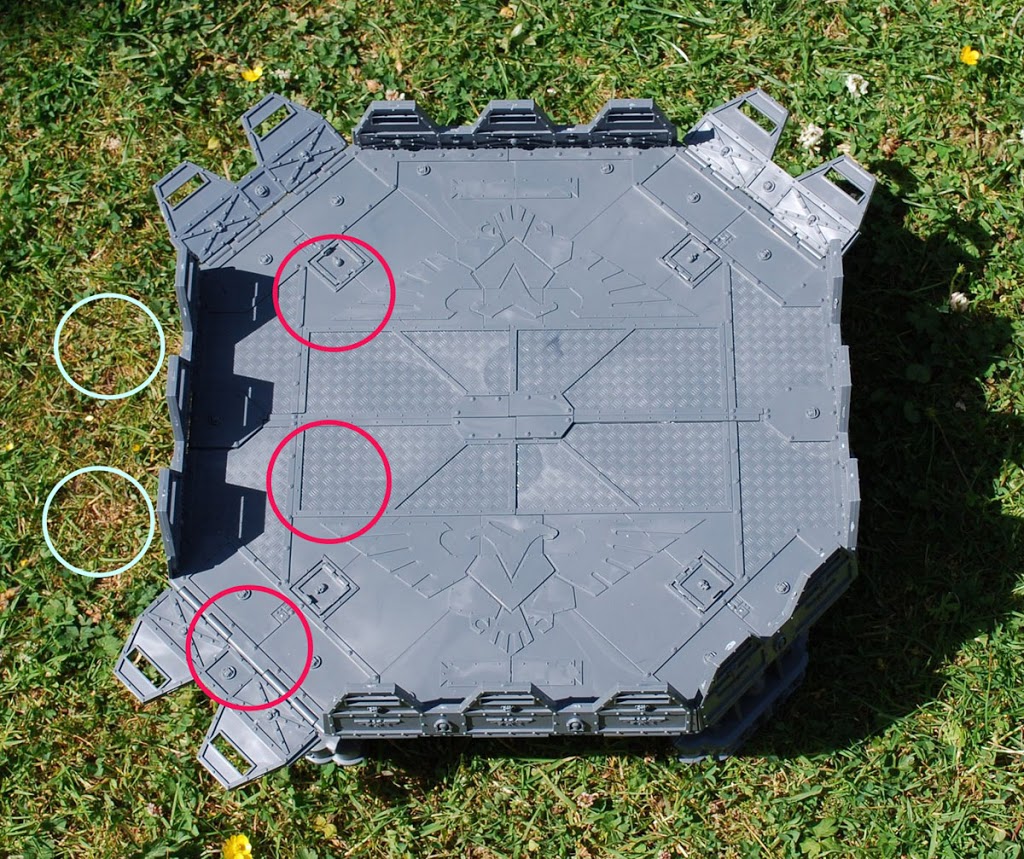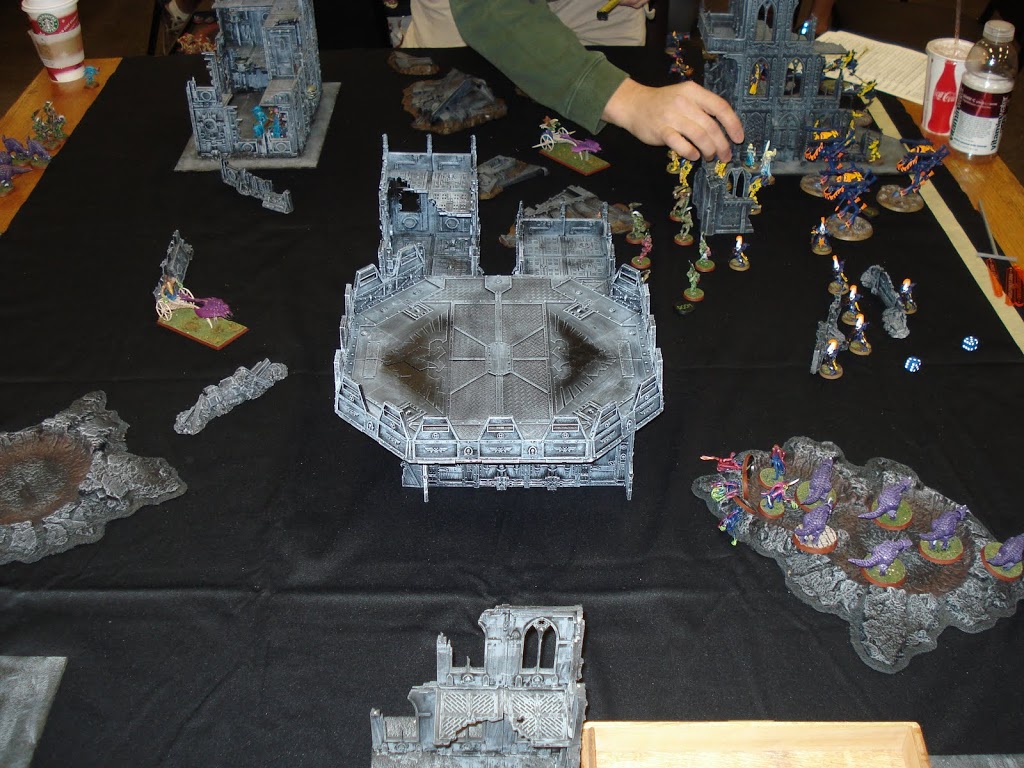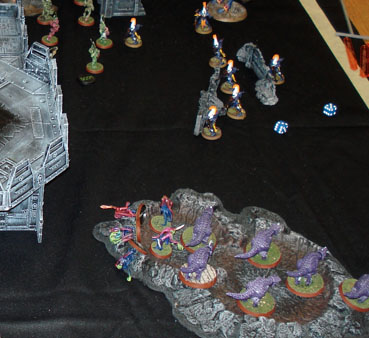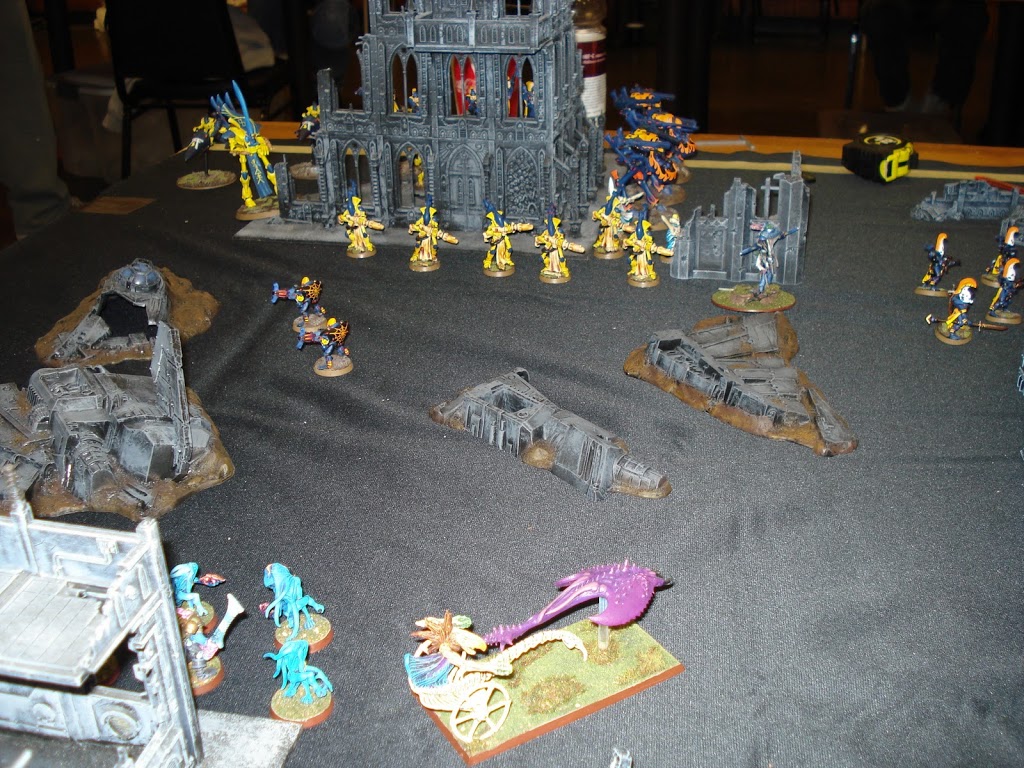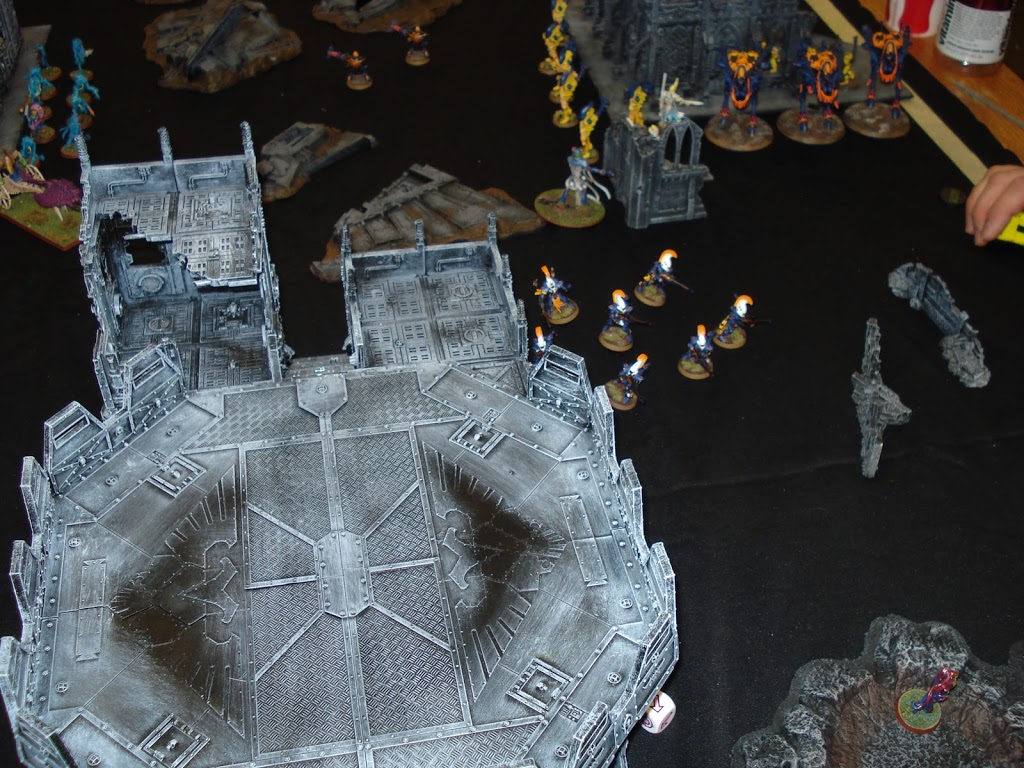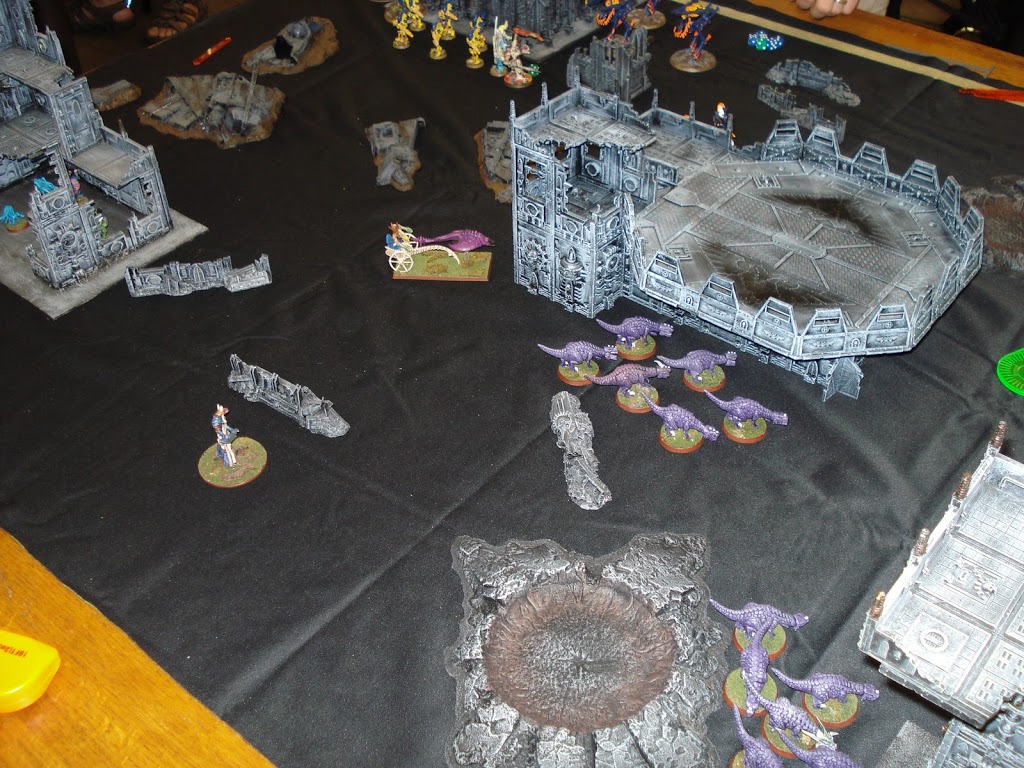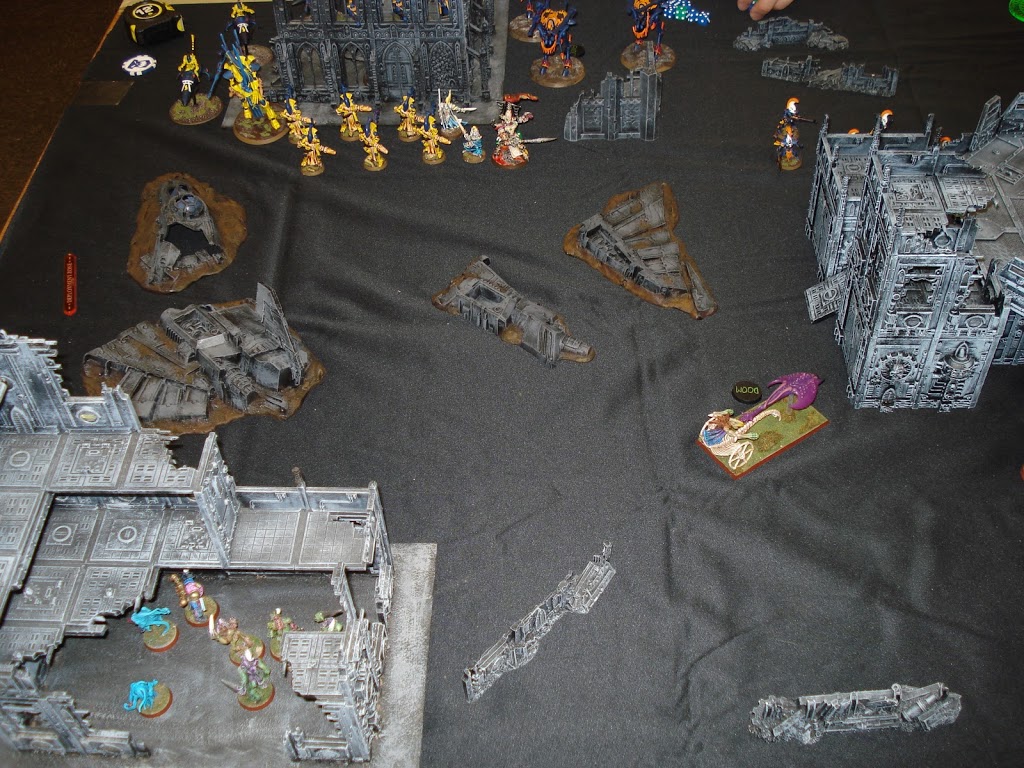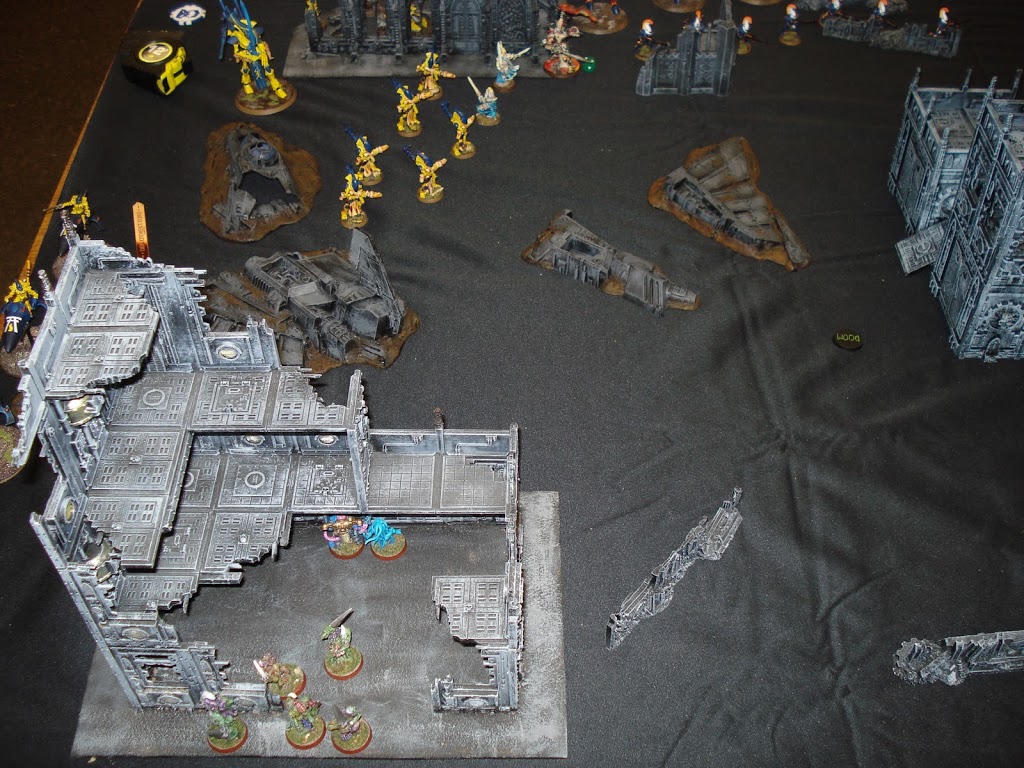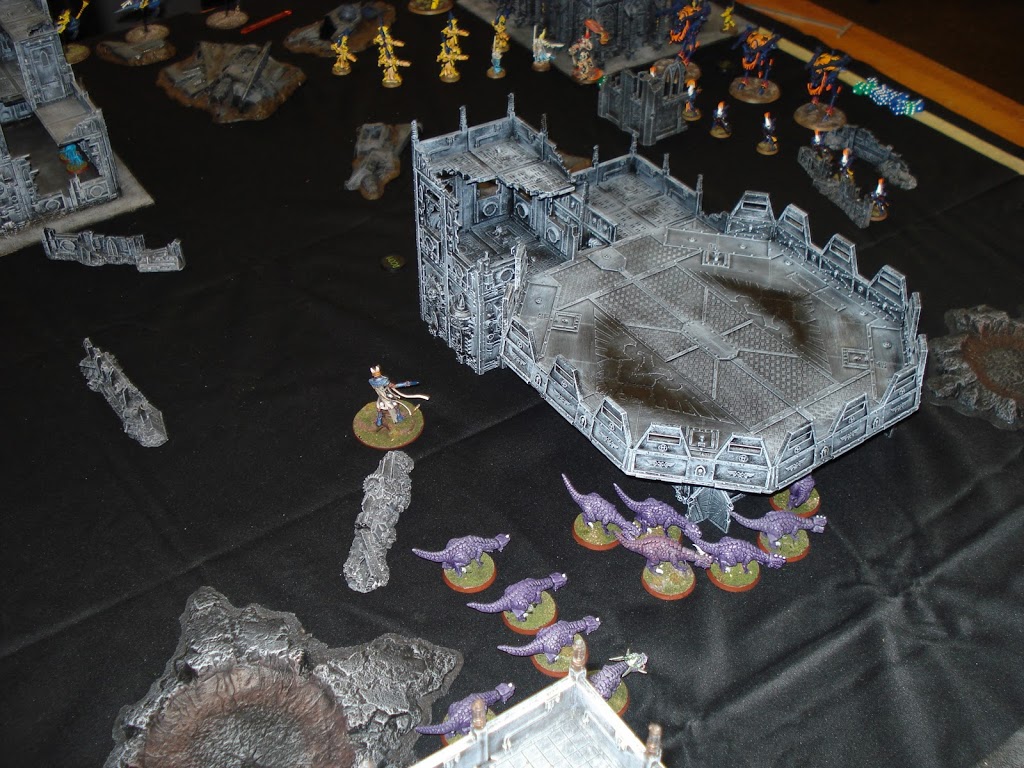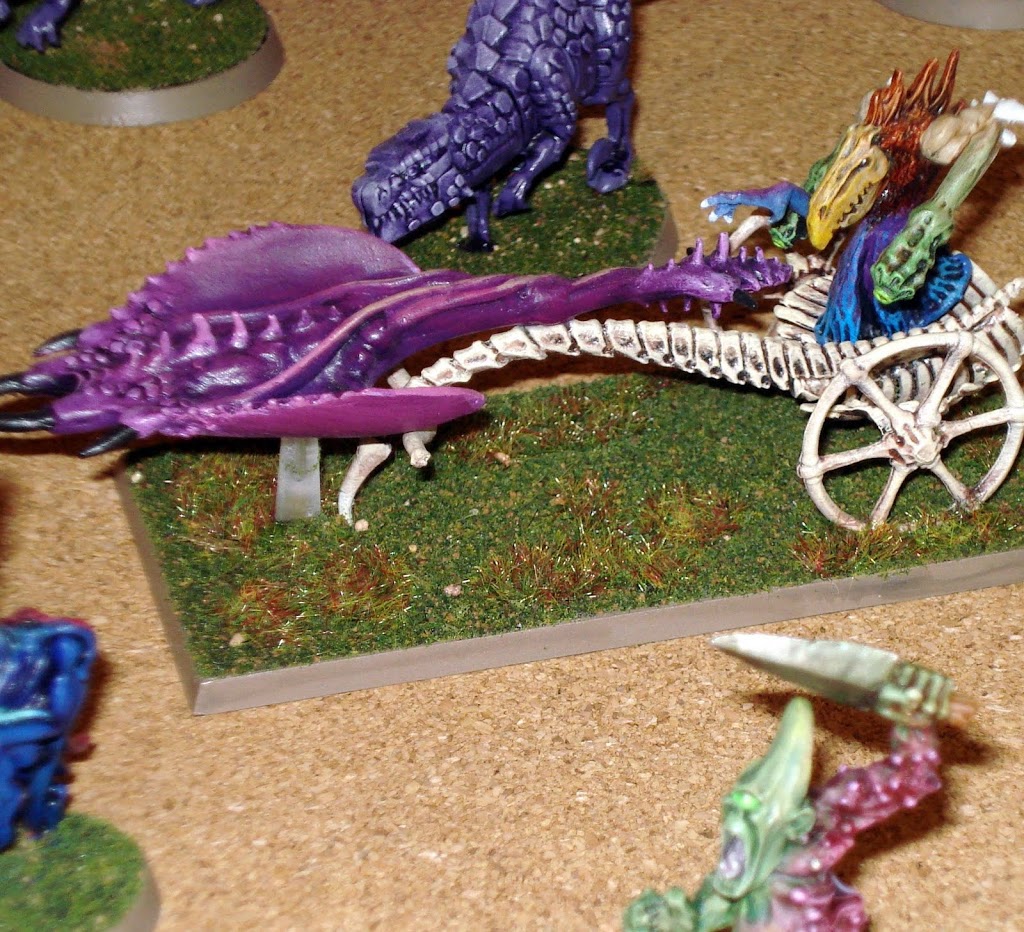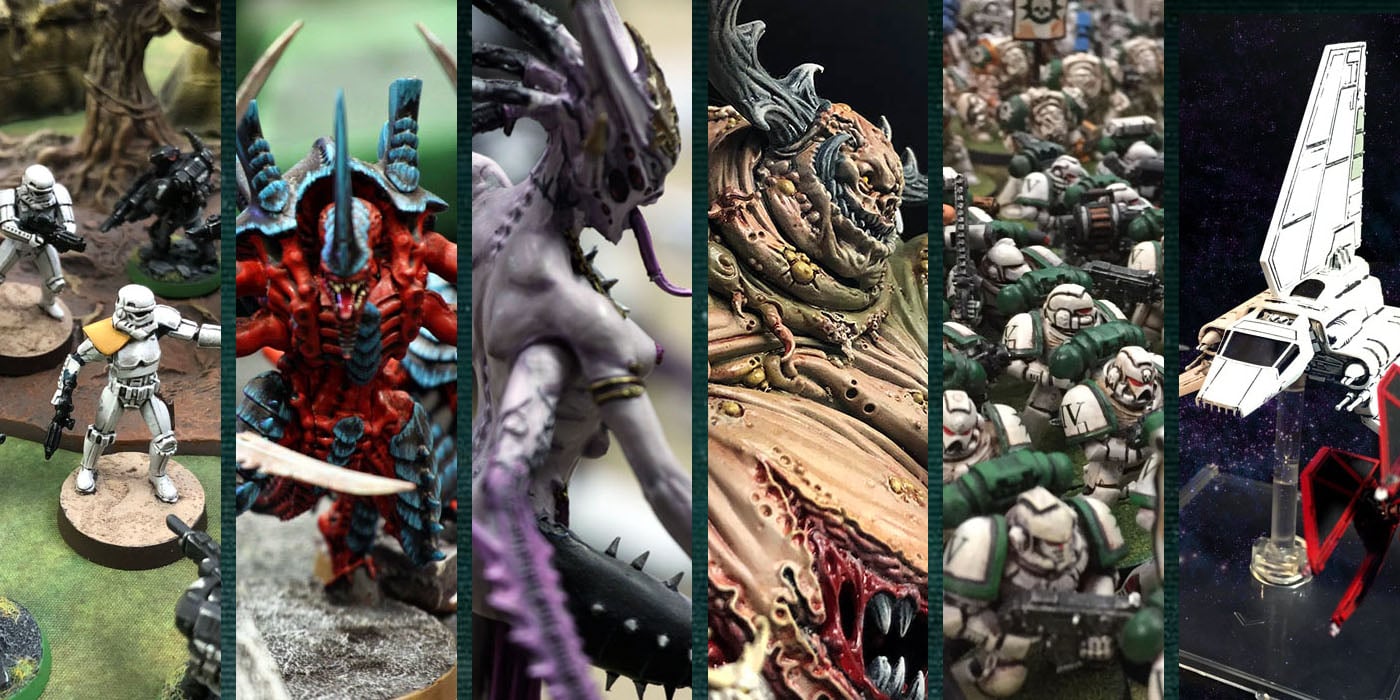40K: Brent’s Lament – The Footdar, Triumphant!

A much under-discussed aspect of wargaming is losing! You aren’t going to win them all – not if you play the right people. Just remember, those are the games you can learn the most from.
Hiya folks, it’s Brent here on a Wednesday. I’m going to dissect a game I played against Greg at Da Boyz tournament this past November. You may know Greg was the eventual event winner, so it should come as no surprise I lost.
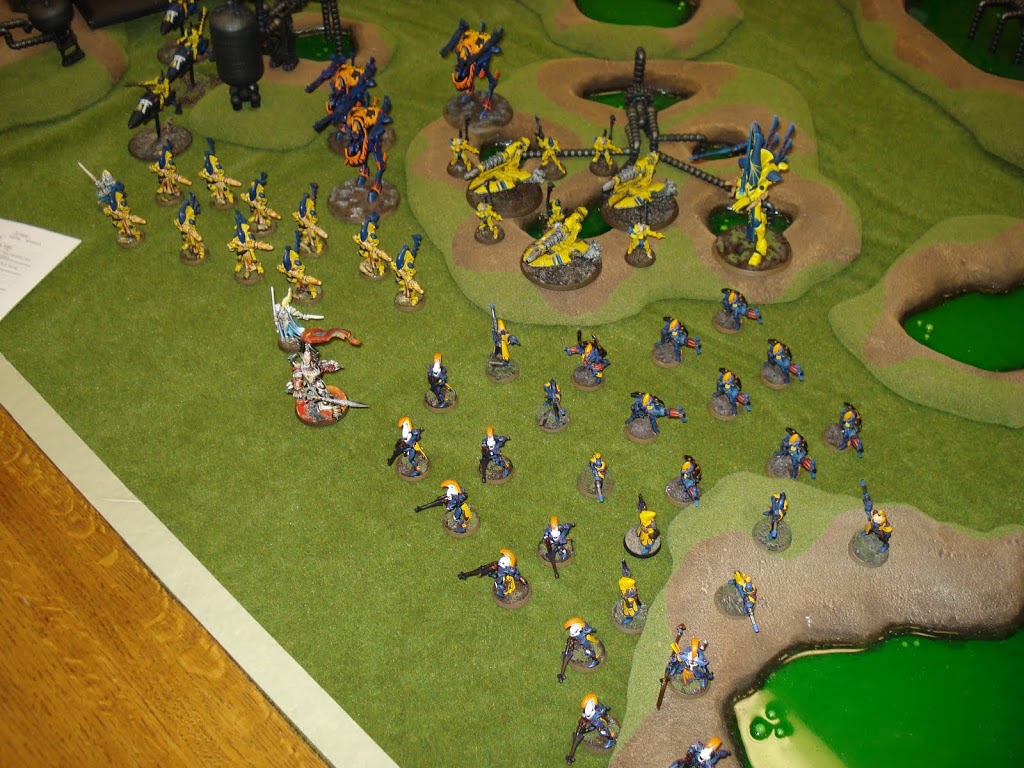 |
| Greg’s Footdar. As an aside, I emailed him and asked his permission to write this article for Bell of Lost Souls. |
Ah, the Footdar! It’s probably the most reviled army variant out there; after all, it breaks all the current 5th edition design wisdom, especially its lack of mech. Still, it continues to win tournaments… decisively.
The argument you’ll hear most frequently is Footdar can’t compete in a pure competitive environment, to which I’d say, “Isn’t that a contradiction in terms?” Any tournament is by definition a competition, where the eventual winner has threaded any number of challenges to emerge victorious… not least of which are the other players! A better way of putting it is the Footdar probably wouldn’t win a No-Holds Barred competition, where any list is allowed and the scenarios from the book aren’t much changed.
You see, most events are four or more rounds of unusual scenarios – it ain’t just Dawn of War Pitched Battle. There is usually a primary, secondary, and tertiary objective, each of which offers Battle Points to the general that can capitalize on them properly.
The Footdar list can do that surprisingly well. There are built in redundancies which aren’t immediately obvious, but there are also force multipliers which a canny general can wield like a surgeon, using the Eldar to devastate an unwary opponent.
So what’s a force multiplier? It’s anything that can increase the potential of a unit to fulfill its purpose – and usually that purpose is killing stuff. A Farseer casting Guide on a unit of War Walkers with Scatter Lasers and Doom on a unit of Fiends is a pretty good example.
I wonder where I got that one?
A Footdar’s strength lies in its tactical depth. It is capable of achieving a number of different battlefield objectives… and that’s the key. It’s a list designed to play the objectives, not the opposing army.
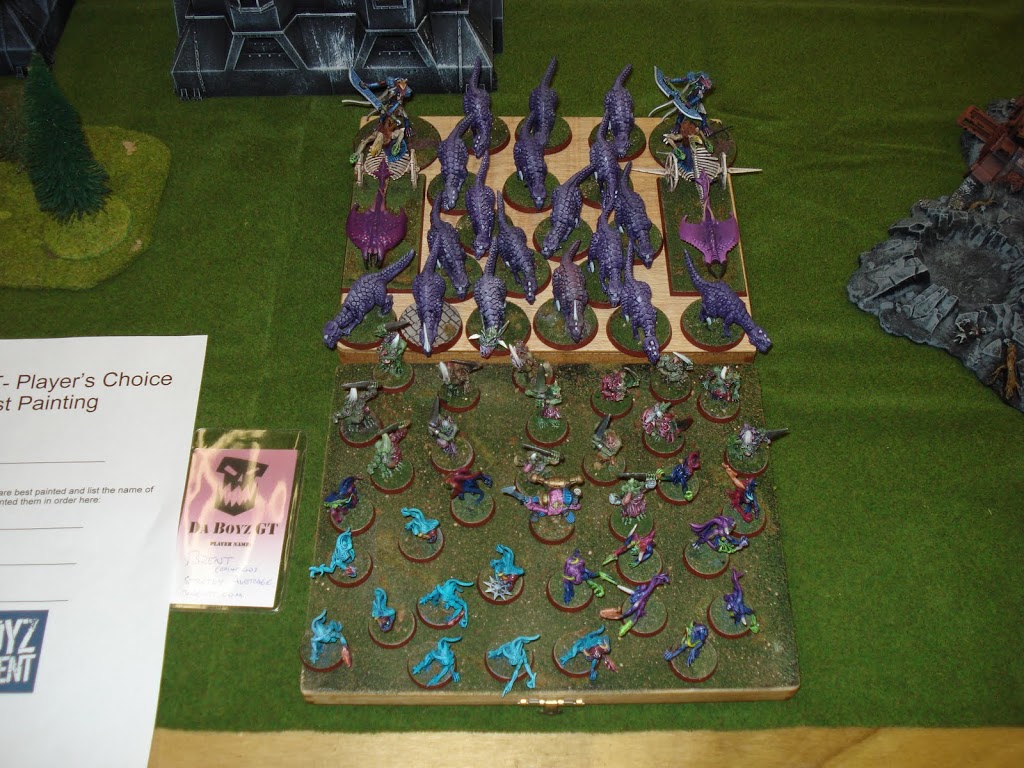 |
| I used my dice box as a display board, even flocking the top! It earned me those valuable Battle Points! |
I’ve been playing Daemons as my competitive army for about a year and a half, and its done extremely well for me. I won’t spend the page space breaking down the list because I don’t believe most of you need it. Suffice it to say, it has unexpected shooting and enviable close-combat efficiency. The Fiends are the key units, being Beasts with 6 Str5 Rending attacks each on the charge… and yes, that can be 24-inches.
While this is the comp-friendly version of the list, I’m not really sure that’s the point. What I lost in power by dropping 2 Heralds and a Prince I gained in Troops capable of winning objectives. It isn’t a soft list by any stretch.
If I was put on the spot, I’d say my list was better. Doesn’t much matter though, did it?
It can be hard to follow a game through pictures, so I’ve tried to simplify the action. The primary objective was grabbing your opponent’s objective, after which it comes off the board. In most cases, I’d think, this scenario will lead to brutal, bloody… draws!
Here’s the battlefield. I’m on the left with my objective in the building marked by the blue arrow. Greg is on the right with his entire army defending the building marked by the orange arrow.
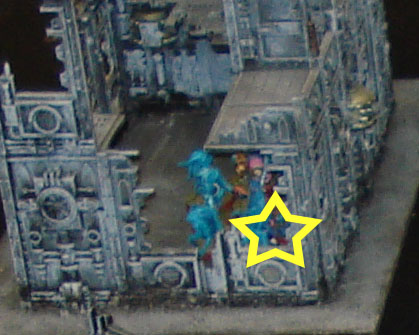 |
| Mine. |
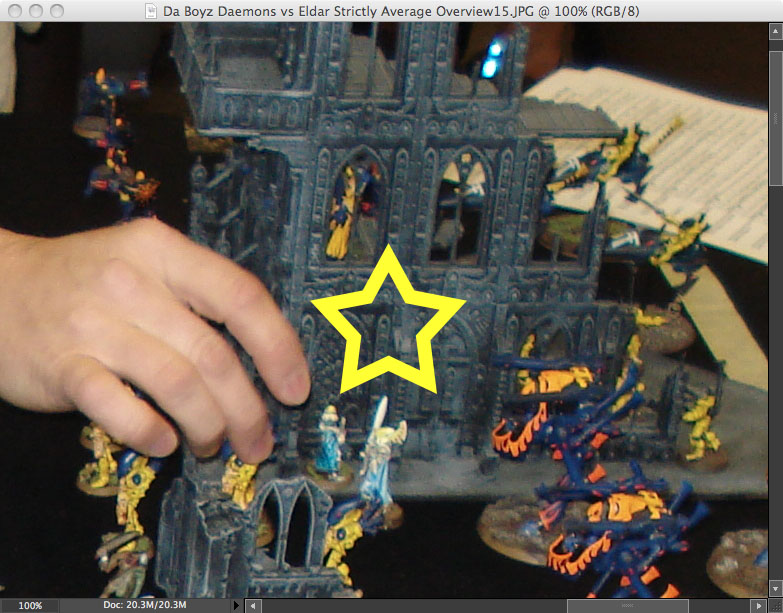 |
| His. |
So, you noticed the big, red symbol in the middle of the battlefield? It was a huge problem for me, primarily because it was impassable for Fiends.
How, I hear you ask? Look at the diagram above and I’ll explain. Beasts units can’t scale multi-level buildings; that’s as true for Thunder Wolf Calvary as it is for Fiends. Keeping that in mind, what if I Deep Strike on this terrain piece by accident? If I hit dead-center, I could probably make a case for the unit, since the actual piece had a ramp… still, I’m not certain a judge would rule in my favor. More likely, I’d hit something in some fashion like I’ve marked in circles above.
Beasts can’t scale walls. The models in red on the terrain can’t legally be in coherency with the models in white on the ground. Thus it’s impassable. Thus if my Fiends land in such a way they count as destroyed.
The helipad was an enormous no-man’s-land for me, in addition to blocking line of sight. Fun.
After much ado!
I took the time to write the explanation because once you understand all that, the flow of the game is easy. Above you see the initial phase of the game. I didn’t get my primary wave, which was fairly disappointing since it included two units of Fiends and the Plaugebearers I wanted on the objective, but it wasn’t devastating.
I don’t know about you, but I always approach a game with a general plan. It gives me structure within which to operate. In this game, I had to minimize the impact of the helipad terrain piece in the center. I intended to drop a 10-strong unit of Plaguebearers on the helipad so I could use their Icon to bring in units without risk; with Feel No Pain, the unit could go to ground and they’d be extremely difficult to shift. Unfortunately, the unit in question drifted almost a foot toward the Eldar.
Right in front of them, in fact, and entirely out of cover. When that happened I panicked.
Really panicked. I was already concerned about the effect the terrain would have and I was having a hard time seeing a path to victory. Initially I worked out a plan then failed to get the wave I needed; thinking on the fly, I worked out another plan with the Plaguebearers – and they drifted! It’s hard to explain how disconcerting this was.
So I decided to give Greg more to worry about. I dropped my lone unit of Fiends in cover and within charge range next turn – he’d have to deal with them, and I wasn’t sure he could. To cloud the strategy, I also dropped the two Heralds right in front of his army.
Suffice it to say, Greg did deal with them. On his turn he used his Farseer to cast Doom on the Fiends and Guide on the War Walkers, then proceeded to torrent them off the board.
Then he turned his attention to the Plaguebearers, killing those, too.
The other Fiends stayed in reserve, perhaps commiserating with the unit just returned. I tried to grab back control of the game and moved what units I had in position to shoot. In doing so, I created a hole…
…and Greg was quick to exploit it. He moved his Warp Spiders up, shot the remaining Horrors off the objective, then used his assault teleport to appear on it.
According to the scenario, up it came! Greg was now firmly in control, since the best I could do now was a draw. And I was no closer to his objective…
That darn helipad! When my remaining units became available, I had to give the terrain a wide berth. Further, the War Walkers proved devastating turn after turn, so I couldn’t leave anything within range and line of sight. I hid my units behind the terrain, intending to hug an edge then jump out and assault the Eldar.
…his army shifts left. I move those units left…
…his army shifts right. The end of this game is as inevitable as the sea: the moment my Fiends move to position to assault the Eldar line, they’re going to take an incredible amount of firepower. Knowing my army the way I do, I’m convinced I could have salvaged something for the assault.
But I’m equally convinced it wouldn’t have been enough. It didn’t matter that I had a significant amount of my army left… he’d neutered it. Game over.
I won’t lie, this was a tough beat. Greg is a veteran player, one of the Toledo crew – dudes who are well-respected on the tournament scene but little-known online – and he knew his army. He used the terrain in the same way I failed to, ultimately leading me around on a leash before the spanking.
Are tournaments about winning? If that’s the only reason you’d choose to attend, I’d suggest you save your money.
- The People
- The Armies
- The Games
If you’ve read some of my previous article than I can’t disguise my competitiveness. I play hard because that’s how I enjoy the game… but that’s not why I attend tournaments. Bottom line, I want to meet like-minded gamers, gawk at their well-painted and lovingly converted armies, then play someone new on terrain I don’t have at home.
For me, tournaments are social. Knowing that, it shouldn’t surprise you that a bunch of us went out to eat that night – so I got a chance to drink away my misery!
In fact, Greg sat next to me… and if I cried on his shoulder some, so what? What happens at a tournament stays at a…
Sorry. Point is, we analyzed the game and I picked up some pointers.
1) Play the objective. Greg was laser-focused on grabbing my objective; the moment I drew units off it, he sent forward his Spiders to grab it. It didn’t matter that he sacrificed the unit. Frankly, I should have been prepared for a move like this but allowed the setbacks to rattle me.
2) Analyze the Pregame. I placed my objective on one corner, in cover… but why? That was correct for his army, but not for mine. I did it by rote, without much thought. In truth, the best placement was the middle of my deployment zone. It would have used the large centerpiece of terrain instead of fighting it. I could have forced his army to choose which side to play on, then lever off the center at it.
3) Play Patient. This is my thought, after much self-recrimination. Things went wrong in the beginning – but that can happen. When I realized my initial aggressive posture wasn’t going to work… which should have happened around the time the Plaguebearers drifted… I should have backed off. Had I played patiently and massed my army behind the terrain, I could have afforded the inevitable losses the assault would cost and still overwhelmed the Eldar line.
There’s really nothing more to say… which is probably good, since I’ve already lay down a Wall of Text; I’ll end this article by making a few closing points.
I realize it would be easy to dismiss what I’ve written, to blow it off by saying I suck as a player and all of this is obvious. Being dismissive is easy; go there if you’d like, but you’d be wrong. I don’t suck – I’m quite good, in fact – but I was outplayed, certainly. I made no pure error, no real ‘mistakes,’ but for factors I’ve tried to illustrate impacted my decisions and I didn’t make the best available moves.
If you find the game slipping away, try to step away from it and make an honest assessment of what’s gone wrong. Doing so may give you the route to victory. But not always. Still, though the game was a brutal loss, analyzing it honestly and in depth has improved my game. I’m not only ready, I’m eager for a rematch!
Isn’t that more honest than blaming it all on dice?
There’s a ton more I could say but an article has to come to a close at some point. Have any of you folks learned some tough lessons through a loss?
Thoughts? Comments? Hugs and gropings?

